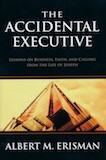Is It Right to Display Art in Places of Worship?
Daily Reflection / Produced by The High Calling
Above the entrance, from the interior to the exterior of the temple, and on every interior and exterior wall, there were carved winged creatures and palm trees. The palm trees were positioned between the winged creatures, and each winged creature had two faces.
Ezekiel 41:17
My guess is that those who read today's reflection will respond diversely to the question I'm asking. For some of my readers, it's obviously right for works of art to be displayed appropriately within sanctuaries and worship centers. For others, however, the use of art in spaces for worship is something to be avoided. A few basic symbols—cross, baptismal font, large Bible—are fine. But artistic displays run the risk of violating the second commandment, which reads in the King James Version: "Thou shalt not make unto thee any graven image, or any likeness of any thing that is in heaven above, or that is in the earth beneath, or that is in the water under the earth. Thou shalt not bow down thyself to them, nor serve them..." (Exod. 20:4-5a, KJV).
My own theological roots grow into the Reformed tradition, which began with John Calvin and other 16th-century Protestants. These Christians, having seen some of the excesses in some churches and taking seriously the human tendency toward idolatry, greatly limited artistic displays in a worship setting. Some folk in the Reformed tradition even frowned on art in general because it seemed to bless "graven images."
Yet, God's design for the temple in Jerusalem quite clearly included artistic elements. The walls of the temple were to be covered with "carved winged creatures and palm trees" (41:18). Whether these were left in their wooden form or whether they were covered with gold, as in Solomon's temple (see 1 Kings 6:29-31) is not clear. But what is clear is that God wanted his temple to include likenesses of things in heaven and things on earth. How is this possible?
Surely God would not violate his own commandment. So, it would seem that the second commandment was not meant to rule out all artistic representations, even in a worship setting. Rather, the point of the second commandment was to prohibit worshiping works of art. It was concerned, not about representational art, but rather about idolatry.
Thus, Ezekiel 41 and many other passages of Scripture would suggest that works of art can be displayed in places of worship. Moreover, artists can be free to use representations of things in heaven, on earth, and in the sea, just as long as they are not shaping them so that they might be worshipped. As God's people, we must always be aware of our tendency toward idolatry, whether concerning artistic images or so many other things our hearts might be tempted to worship. Yet, as those who bear God's image, we are free to exercise our creative gifts for his glory, even using them in worship settings to lead us before God's throne of grace.
QUESTIONS FOR FURTHER REFLECTION: How does your church–or the church(es) you've been in before–utilize art in worship? How can art enhance our worship? How might it detract from our worship?
PRAYER: Almighty, glorious, creator God, you have made this world beautiful. And you have made us so that we might add to the beauty through using the gifts you have given us. Thank you for this amazing stewardship.
Help us, Lord, never to idolize that which we have made. Rather, may our creative efforts bring glory to you even as they give us delight.
May everything we do in our gathered worship be honoring to you. And may this also be true of everything we do as we worship you each day by offering our lives for your purposes and glory. Amen.






